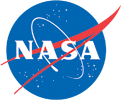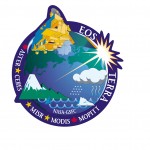Contents of this section contain information useful to data users when called on to create presentations. Information about data sets, supporting documents, presentations, and resources with rich imagery are listed.
Theoretical Basis for Data Products
- Algorithm Theoretical Basis Documents (ATBDs)
For details on the logic behind each of Terra’s data products, refer to the listing of ATBDs. These are technical documents describing the process by which the Terra data products are produced using the radiance and reflectance information collected by the five on-board sensors.
Documents
- Terra Fact Sheet – An overview article about the Terra Mission published on the Earth Observatory. It also has images and animations of the satellite and instruments that could be useful in presentations.
- Terra Brochure (pdf)
- Terra Science Writer Guide (pdf)
- Terra Press Kit(pdf)
- Terra Turns 5 – article highlights ways Terra instruments work in concert to benefit society, track pollution and monitor Earth’s energy balance
- Terra Core Data Products Summaries (pdf)
Presentations
- Terra at Ten
Presentations given by Terra principal investigators and engineers during Terra’s 10th anniversary celebration in May 2011. - Remote Sensing of the Earth’s Environment from Terra
A short course presented by Terra principal investigators to graduate students at La Scuola per la Societô dell’Informazione, in L’Aquila, Italy, in September 2002. - Collection 6 Atmosphere Team Webinar Series
A collection of presentations about Collection 6 (C6) from 2014 that outline the changes made to Levels 2 and 3 MODIS data.
Web Resources
- NASA’s Earth Observations (NEO)
NEO is your source for global data imagery from NASA. The global data sets are interactive allowing users to look for relationships between different types of data. Ever wondered how Sea Surface Temperature and Chlorophyll concentrations are related? Use the interactive tool to see how.
- Earth Observatory
Earth Observatory web site The Earth Observatory offers current information about Earth science through images updated multiple times daily, articles, fact sheets, blogs, and animations. Experiments are activities for educators. The Global Maps section contains movies that show seasonal change in things like plant growth, cloud. The Images section offers satellite images that show new scientific findings, current events, or simple beauty.


